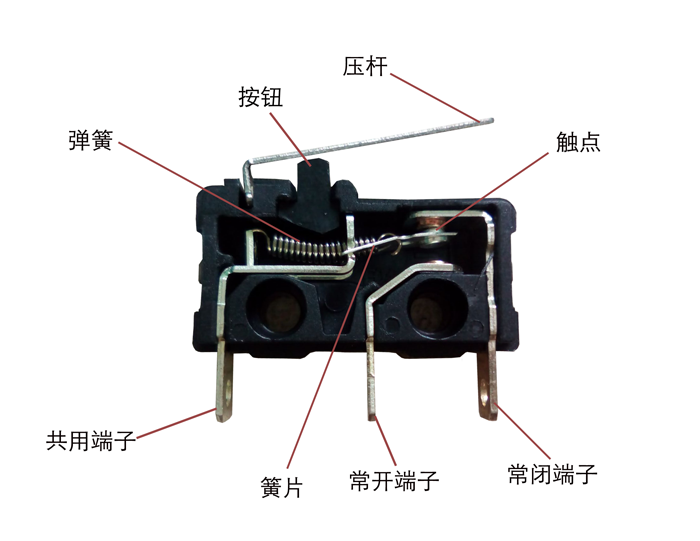Micro switches have been widely used in our lives, so what do you think of the parameters of micro switches? Do you understand what it means?

Rated value: generally refers to the value that is used as a guaranteed reference for switching characteristics and performance, such as rated current, rated voltage, etc., the premise is specific conditions (type of load, current, voltage, frequency, etc.).
Resin fixing (plastic terminal): After wiring the terminal part with wire, fill the part with resin to fix the part, and eliminate the exposed live part to improve the drip resistance.
Insulation resistance: refers to the resistance value between non-connected terminals, between terminals and non-charged metal parts, and between terminals and ground.
Withstand voltage: the critical value that does not cause insulation damage after applying high voltage to the specified measurement site for 1 minute. (also called 1min power frequency withstand voltage test)
Impact resistance: Durable impact means that the micro switch will not be damaged by the mechanical impact during transportation or installation, and meet the range of operating characteristics shock within.
Malfunction impact: refers to the impact range that the contacts closed due to the impact do not separate within the specified time when the micro switch is in use.
Mechanical life: The switch life when the contact is not energized and the overtravel (OT) is set to the specified value at the specified operating frequency to make it run.
Contact resistance: It indicates the resistance of the contact portion of the contact, but generally indicates the resistance value including the resistance of the spring and the conductor at the terminal portion.
Vibration resistance: Malfunction vibration When the micro switch is in use, the vibration range that the contacts closed due to vibration do not separate within a specified time.
Electrical life: The switch life when the rated load is connected to the contact and the overtravel (OT) is set to the specified value at the specified operating frequency.
The working principle of the micro switch
The external mechanical force acts on the action reed through transmission elements (pressing pins, buttons, levers, rollers, etc.), and when the action reed is displaced to the critical point, an instantaneous action occurs, making the moving contact at the end of the action reed and the fixed contact point to switch on or off quickly. When the force on the transmission element is removed, the action reed generates a reverse action force, and when the reverse stroke of the transmission element reaches the action critical point of the reed, the reverse action is completed instantaneously. The contact distance of the micro switch is small, the action stroke is short, the pressing power is small, and the on-off is fast. The action speed of the moving contact has nothing to do with the action speed of the transmission element.



